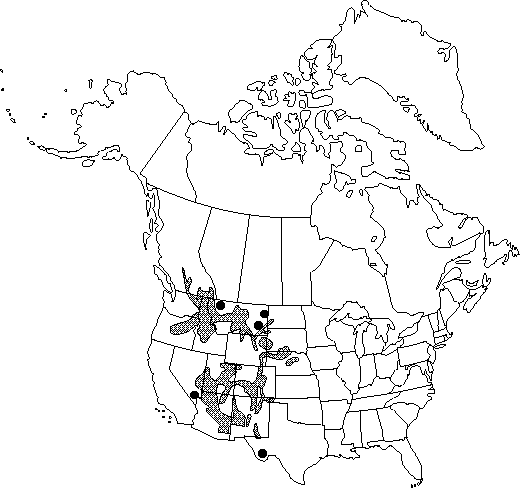Difference between revisions of "Pinus ponderosa var. scopulorum"
in S. Watson,Bot. California 2: 126. 1880.
FNA>Volume Importer |
FNA>Volume Importer |
(No difference)
| |
Revision as of 18:56, 24 September 2019
Trees to 24m; trunk to 1.5m diam. Twigs mostly red-brown, rarely glaucous. Leaves mainly 2–3 per fascicle, (7–)10–17cm × (1.2–)1.4–2mm. Pollen cones yellow. Seed cones mostly symmetric, 5–10cm; apophyses of fertile scales moderately raised; umbo low pyramidal, narrowing acuminately to a stout-based prickle or short sharp spur. Seed body 3–4mm; wing to 15mm.
Habitat: Tablelands, canyon slopes and rims, and foothills, western Great Plains, Rocky Mountains
Elevation: 1000–3000m
Distribution

B.C., Ariz., Colo., Idaho, Mont., Nebr., Nev., N.Mex., N.Dak., Okla., Oreg., S.Dak., Tex., Utah, Wash., Wyo., Mexico.
Discussion
The most important timber pine of the Rocky Mountains is Pinus ponderosa var. scopulorum. It intergrades with P. ponderosa var. ponderosa in Idaho, Montana, and Washington, and with P. ponderosa var. arizonica in Arizona, New Mexico, and Mexico.
Selected References
None.